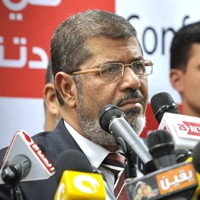Days after demonstrators stormed the U.S. Embassy in Cairo, Egypt, and the U.S. Consulate in Benghazi, Libya, a wave of anti-American protests has swept through the region. For now, the demonstrations targeting U.S. embassies remain limited in size and scope, and if previous episodes of similar reactions to perceived slights against Islam are any indication, they are likely to fade relatively quickly. Nevertheless, as expressions of the anti-American sentiment that pervades the region, the protests highlight the challenges facing Washington as it tries to navigate the changing political landscape of the Middle East.
Before examining those challenges further, however, it is important to distinguish between the incidents in Benghazi and Cairo, for though they were initially presented as two examples of the same phenomenon, they in fact represent discrete events, with distinct but equally significant implications.
The attack against the consulate in Benghazi that resulted in the deaths of four Americans, including Ambassador Christopher Stevens, increasingly appears to have been a premeditated attack by an armed militia of extremist Salafists that simply took advantage of the protests to launch its assault.* Tragic as it may be, that such an attack took place in Libya can hardly come as a surprise. Despite the significant progress Libya has made in terms of the postwar reconstruction of its political institutions, it is no secret that the country’s security situation has remained chaotic. Moreover, the presence of Islamist extremists among the rebels fighting in eastern Libya, widely known at the time of the NATO intervention, was one of the prominent arguments that critics used to oppose the intervention.

